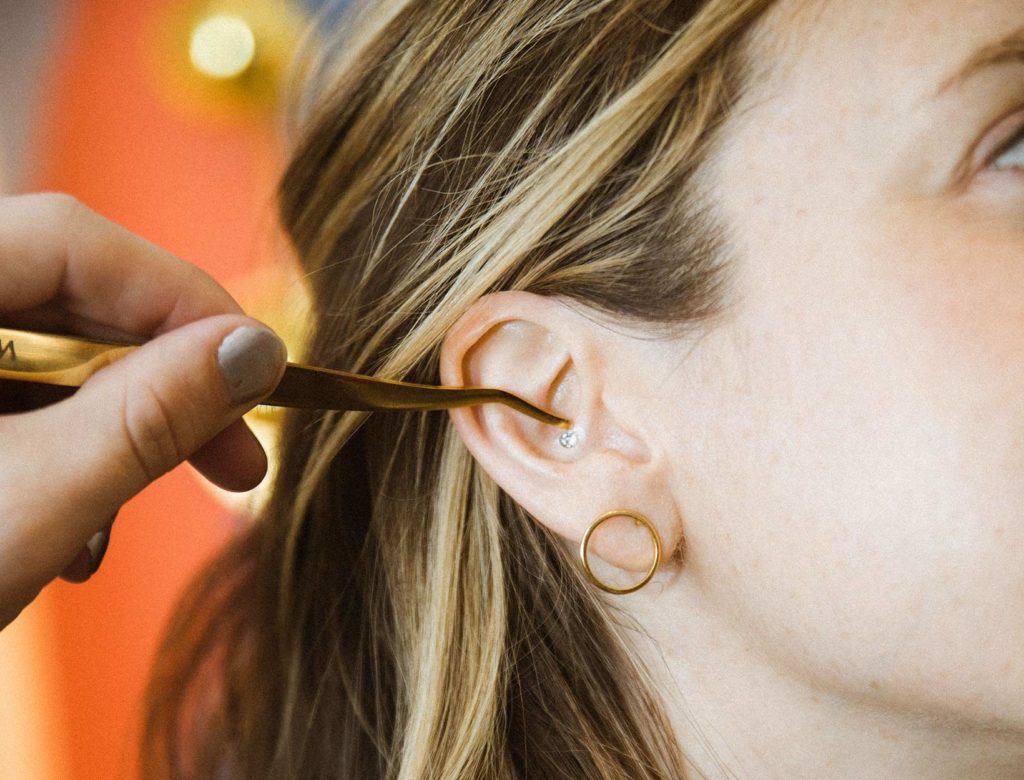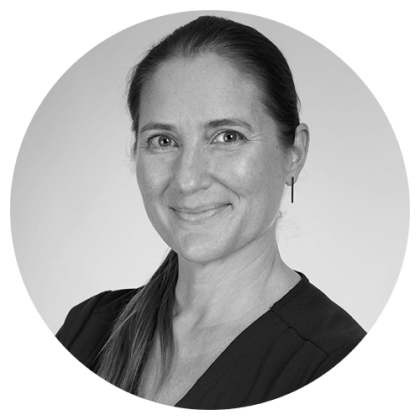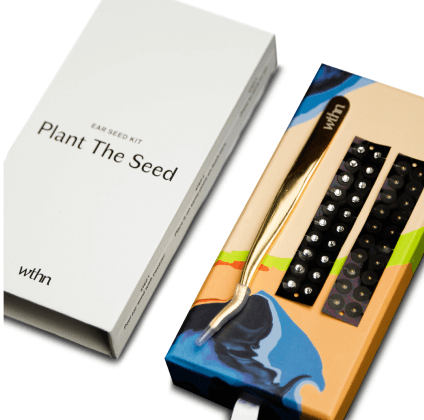Ear Seeds for Easy, At-Home Acupressure


When we’re on-site at an In goop Health summit, there’s one walk-up activation we make sure to hit before the day is out: ear seeds. Once applied, they look like a constellation of small earrings—but they’re actually strategically placed teeny beads based in the tradition of auricular acupuncture.
Today, ear seeds are often offered as a complement to acupuncture, cupping, and other traditional Chinese medicine treatments. And they’re something you can do at home. Shari Auth, the founder of the New York City acupuncture studio WTHN, has a kit that makes that process easy.
A Q&A with Shari Auth, DACM, LAc, LMT
The first ear seeds were used to support health and well-being as a way of delivering auricular acupuncture—acupuncture on the ear—without needles.
The ear is important in traditional Chinese medicine because it’s one of the areas of the body considered to be a microcosm of the body as a whole. (Others include the hand, the foot, the abdomen, and the iris of the eye.) On the ear, there are dozens of pressure points that correspond to different areas of the body. When you apply pressure to one of those points by applying an ear seed, that point activates. (Ear seeds used to be actual seeds from the Vaccaria plant, but now some use gold beads attached to a clear plastic sticker.)
Often, acupuncturists will offer ear seeds as a complement to any treatment. But they’re also easy and safe to do at home. You choose points on the ear according to whatever therapeutic benefit you’re looking for and apply the seeds with a pair of tweezers. They’re surprisingly resilient. People expect them to fall off in the shower, but they don’t. You keep them on for three to five days, and then they’ll either fall off or you remove them yourself. And they look nice. We’ve made a kit that has gold seeds as well as ones topped with Swarovski crystals that are very pretty—they look like a little constellation of earrings.
With the WTHN Ear Seed Kit, we include an instruction booklet with ten of the most commonly used auricular acupuncture points. It’s important to remember that the points are more accurately described as areas. It’s not as if the point is the size of the seed and you have to hit it exactly. Wherever a point is marked on the ear map, you’ve got some leeway—the actual area you’re targeting is probably ten times larger than the seed itself.
Aiming for that area, you take an ear seed off its paper, holding the seed itself with your tweezers, and then you just place it on the ear at your targeted point. If you need to, you can smooth down the sticker. For maximum benefit, I suggest placing them on points on both ears.
Unlike acupuncture, which uses a needle in the skin for twenty or thirty minutes at a time, ear seeds provide lighter stimulation over a much longer period of time. They work on their own just by sitting on the skin, but you can also press on them to give them an additional boost. Be gentle—you don’t want to irritate the skin under the seed.
You don’t want to leave ear seeds on for more than five days at a time. It could desensitize the point. If you’d like to wear ear seeds continuously, I suggest taking a day or two off between applications.
Ideally, you notice a change yourself. I’ve been in situations where I’ve been lecturing about traditional Chinese medicine, and while I talk, somebody is going around and putting ear seeds on everybody’s Shen Men, the relaxation point on the ear. It’s one of the most common points we use in auricular acupuncture. There’s often a palpable feeling in the room once everyone’s ear seeds are placed.
Shari Auth, DACM, LAc, LMT, is a cofounder and the chief healing officer at WTHN, an acupuncture studio and wellness brand in New York City. Auth has practiced holistic health for more than two decades and integrates a number of modalities into her work, including acupuncture, cupping, herbal medicine, and sound therapy.
This article is for informational purposes only, even if and regardless of whether it features the advice of physicians and medical practitioners. This article is not, nor is it intended to be, a substitute for professional medical advice, diagnosis, or treatment and should never be relied upon for specific medical advice. The views expressed in this article are the views of the expert and do not necessarily represent the views of goop.
